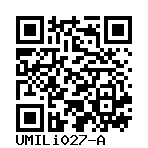UMILi027-A
General
Donor Information
General Donor Information |
|
| Sex | female |
| Ethnicity | Central European |
Phenotype and Disease related information (Donor) |
|
| Diseases | A disease was diagnosed.
|
External Databases (Donor) |
|
| BioSamples | SAMEA13565885 |
Ethics
| Has informed consent been obtained from the donor of the embryo/tissue from which the pluripotent stem cells have been derived? | Yes |
| Was the consent voluntarily given? | Yes |
| Has the donor been informed that participation will not directly influence their personal treatment? | Yes |
| Can you provide us with a copy of the Donor Information Sheet provided to the donor? | Yes |
| Do you (Depositor/Provider) hold the original Donor Consent Form? | No |
| If you do not hold the Donor Consent Form, do you know who does? | Yes |
| Confirm that consent was obtained by a qualified professional | Yes |
| Has the donor been informed about how her/his data will be protected? | Yes |
| Please indicate whether the data associated with the donated material has been pseudonymised or anonymised. | pseudonymised |
| Does consent explicitly allow the derivation of pluripotent stem cells? | Yes |
| * Does consent expressly prevent the derivation of pluripotent stem cells? | No |
| * Does consent pertain to a specific research project? | Yes |
| Details on restriction to research project | The generated iPS cell line can be used only by Prof. Fornasari in the context of the project entitled: ‘Sviluppo di nuovi modelli sperimentali per lo studio della Sindrome da ipoventilazione Centrale Congenita (CCHS, Sindrome di Ondine)’. |
| Does consent prevent CELLS DERIVED FROM THE DONATED BIOSAMPLE from being made available to researchers anywhere in the world? | Yes |
| How may genetic information associated with the cell line be accessed? | No information |
| Will the donor expect to receive financial benefit, beyond reasonable expenses, in return for donating the biosample? | No |
| Has a favourable opinion been obtained from a research ethics committee, or other ethics review panel, in relation to the Research Protocol including the consent provisions? | Yes |
| Name of accrediting authority involved? | Meyer Children’s Hospital, Florence, Italy |
| Approval number | 7/2015 |
| For generation of the cell line, who was the supplier of any recombined DNA vectors or commercial kits used? |
hIPSC Derivation
General |
|
| Source cell type | |
| Source cell origin |
The structure on the upper limb, between the elbow and the wrist.
Synonyms
|
Reprogramming method |
|
| Vector type | Non-integrating |
| Vector | Sendai virus |
| Genes | |
| Is reprogramming vector detectable? |
No |
| Methods used |
RT-PCR
|
Vector free reprogramming |
|
Other |
|
| Derived under xeno-free conditions |
Unknown |
| Derived under GMP? |
Unknown |
| Available as clinical grade? |
Unknown |
Culture Conditions
| Surface coating | Matrigel/Geltrex |
| Feeder cells |
No |
| Passage method |
Enzyme-free cell dissociation
EDTA
|
| CO2 Concentration | 5 % |
| Medium |
Essential 8™ Flex
|
| Has Rock inhibitor (Y27632) been used at thaw previously with this cell line? | Yes |
Characterisation
Analysis of Undifferentiated Cells
| Marker | Expressed | Immunostaining | RT-PCR | Flow Cytometry | Enzymatic Assay | Expression Profiles |
| POU5F1 (OCT-4) |
Yes |
|||||
| SSEA-4 |
Yes |
|
||||
| NANOG |
Yes |
Score:
| Marker | Present | Absent |
| mCpG | ||
| OCT4 |
Morphology pictures
Fig Pluripotency markers.pdf
Representative image of IPS cells colonies
Differentiation Potency
In vitro directed differentiation
Morphology
Trilineage differentiation qPCR.pdf
trilineage qPCR
Protocol or reference
stemdiff trilineage differentiation kit.pdf
STEMdiff⢠Trilineage Differentiation Kit
In vitro directed differentiation
| Marker | Expressed |
| NCAM1 |
Yes |
| TBXT (BRACHYURY) |
Yes |
Morphology
Trilineage differentiation qPCR.pdf
trilineage qPCR
Protocol or reference
stemdiff trilineage differentiation kit.pdf
STEMdiff⢠Trilineage Differentiation Kit
In vitro directed differentiation
Morphology
Trilineage differentiation qPCR.pdf
trilineage qPCR
Protocol or reference
stemdiff trilineage differentiation kit.pdf
STEMdiff⢠Trilineage Differentiation Kit
Genotyping
Karyotyping (Cell Line) |
|
| Has the cell line karyotype been analysed? |
Yes
|
Other Genotyping (Cell Line) |
|


Login to share your feedback, experiences or results with the research community.